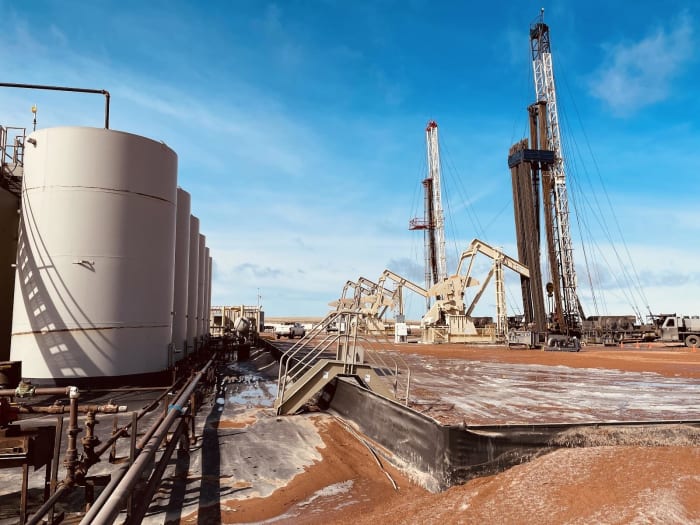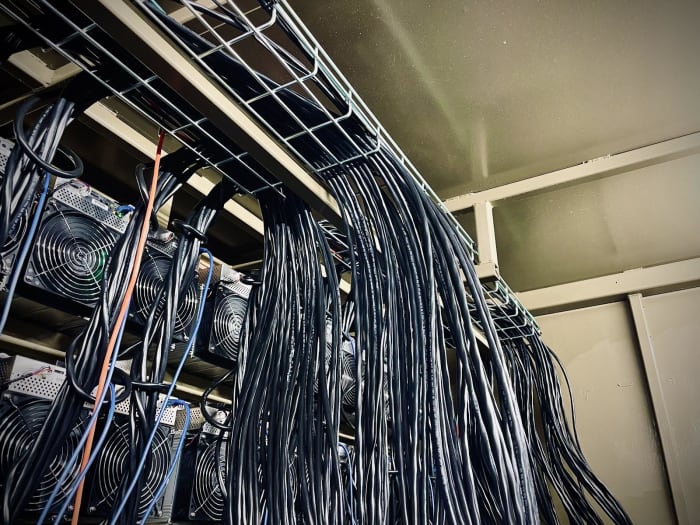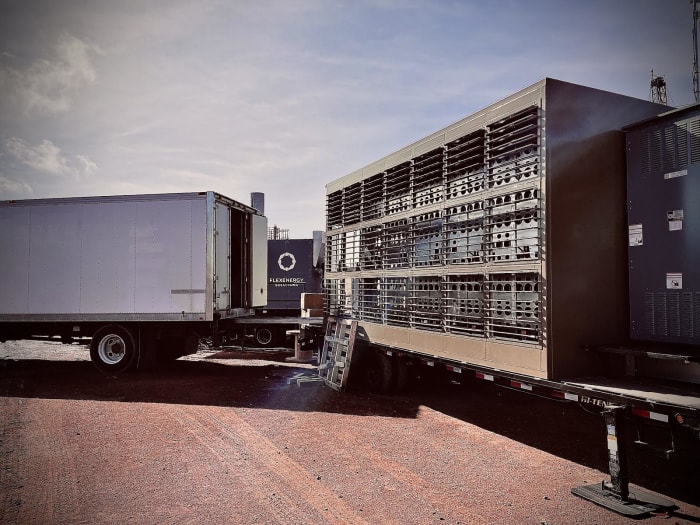The flaring performed in oil and gas operations in the United States shows that new solutions for using the available energy are needed.
It’s official, Bitcoin is too big to ignore. In a geopolitical environment where global superpowers seek some response to bitcoin – whether trying to ban proof-of-work protocols outright or positioning itself to encourage coordinated efforts to improve understanding – this is all clear; Bitcoin is a serious subject, and world leaders are now in a position where they cannot afford not to understand it.
Gone are the days when Bitcoin was dismissed as something for hackers, hobbyists, or criminals alone. Developments over the past four years have produced a solid argument that Bitcoin is ignoring death for the umpteenth time, and it’s not going away. And among all of these developments, Bitcoin’s growing role in the oil and gas industry is perhaps the biggest indicator that it has an undeniable place in the most fundamental aspects of our society.
Bitcoin and oil fields
Recently, I was invited by the Great American Mining (GAM) team to visit one of their bitcoin mining sites in North Dakota, and had the opportunity to see firsthand what it’s like really this symbiotic relationship between energy markets and bitcoin mining.
Let me tell you they did not disappoint.
As the world panicked over the spread of a virus that came with an attempt to shut down entire economies, and as energy markets experienced logistical nightmares in shipping and saw a spike in costs – while, simultaneously, there was growing hysteria around Bitcoin energy consumption – GAM embodied one of the Bitcoin community’s favorite mottos: “Stay humble, stack the sats”.
Well, in the case of GAM, I would rephrase this to: “Stay humble, stack the racks.” Racks and racks of ASIC miners.
Stackable racks
GAM is an American Bitcoin mining company that aims to provide a solution to oil and gas deposits that have blocked energy that cannot be brought to market. You see, part of the process of pumping oil out of the ground comes with a lot of complex issues – it’s not like the oil just exists in a perfect solution below the surface that’s ready for immediate use. Expenses associated with oil extraction have resulted in extensive flaring of natural gas in North Dakota. This has led to flaring throughout the Williston Basin, among other places.
“Oilfield miners operate near or at wellheads where petroleum or natural gas liquids are produced and dry natural gas is generated as waste. This natural gas cannot be brought to market economically and is therefore either vented or flared. When vented, natural gas (mostly methane) escapes directly into the atmosphere, causing about 31 times the greenhouse effect of CO2 over a 100-year period.
–CoinShares January 2023 report on the energy and carbon impact of Bitcoin mining
GAM has developed a strategy that allows a plug-and-play option for oil wells that burn natural gas. No need to wait for government subsidies – bitcoin miners have a built-in incentive to address this environmental issue.
Instead of burning natural gas with zero return potential, GAM offers a nice and simple well solution by providing trailer-mounted miners (let’s call them “TraMM” for short) that can be quickly deployed to site and escorted of generators that are hooked up to natural gas. Once ready for operation, generators are set to an economical consumption rate so that bitcoin miners can run as close to 100% of the time with as little maintenance and tweaking as possible (both on the generator side, as well as the mining racks themselves).
What was really impressive to me was, well…really, there were a few things that I admired. First, the design of TraMMs is done in-house. Not only are they capable of hosting 150-300 bitcoin mining rigs per individual TraMM, they come with an automated system that manages the temperature of the miners – if it gets too hot, the exhaust vents (that’s is just hot air, environmentalists need not panic) open or close automatically to allow the heat to leave the container.
The second thing was my discussions with Wes Sellner, chief operating officer of GAM.
“North Dakota’s gas gathering and processing infrastructure cannot keep up with natural gas production or keep pace with the ups and downs of the oil and gas industry,” according to Sellner.
This means that these operators can produce oil and ship it faster than consumers can use stranded by-products. Which is a dynamic that’s also supported by both a 2014 report on North Dakota’s strong potential for future production, as well as a report from the US State Industrial Commission hearing. North Dakota, aimed at explaining the reduction in gas flaring in the state. And it was good before the curve that was thrown on the oil and gas industry with operations in western Russia (which I talked about here).
Third, I was inspired by GAM’s growth. As of December 2019, GAM had an operational TraMM. Then, before the shutdowns, it kept its head down and worked on refining and perfecting its trailers, and growing its fleet to three a year later by January 2021.
A global pandemic and shutdown of economies has clearly not dampened the ambitions of Bitcoiners. As of February 2023 (11 months later), its fleet now has 27 fully deployed TraMMs in total. With its mining rigs operating at 12 different sites across North Dakota, that’s just over 20 megawatts of hash rate. According to the company, GAM is currently able to produce four new units per month and is working on expanding its manufacturing facility to 12 per month by fall this year.
What does the future hold?
And now, for real, really exciting part. Consider the current landscape in which we find ourselves. Fossil fuels have been aggressively demonized for the past 10 years, at least. The United States has sanctioned Russian oil, while the EU is struggling to know what to do, as Russia was its biggest supplier of fossil fuels. Meanwhile, India is forced by circumstances to buy Russian crude at a discount. The United States found itself forced to be aggressive rethink domestic oil and gas production, in conjunction with its northern neighbors in Canada.
As noted, natural gas is a constant by-product of oil production, and GAM proves that there is strong demand for its product in the state of North Dakota. GAM offers oil producers the opportunity to monetize their gas flaring instead of just “lighting money on the fire,” as Sellner likes to put it. North Dakota oil producers cannot burn their gas fast enough to meet the demand for oil. Demand for this strong and synergistic pair of fossil fuels and bitcoin mining has plenty of room to maneuver without an increase in domestic production.

The future looks bright when you combine Great American Mining’s entrepreneurial spirit with U.S. oil and gas operations
The future looks bright for this young company. While much of the world continues to address the environmental damage implicit in bitcoin mining, this company and others like it are quietly solving huge energy and environmental problems that will only continue as our oil and energy needs are increasing.
There’s a special kind of beauty that accompanies North Dakota’s oil and gas operations when seen crossing the country in the middle of the night. If you are visiting this area of the United States, I recommend driving through the New Town area when the evening is at its height and the world seems still. You’ll know you’re approaching when you notice the recognizable atmospheric glow of city lights against the night sky… only it’s not the city lights that are shining.
These are the flared towers.
This is a guest post by Mike Hobart. The opinions expressed are entirely their own and do not necessarily reflect those of BTC Inc or bitcoin magazine.

